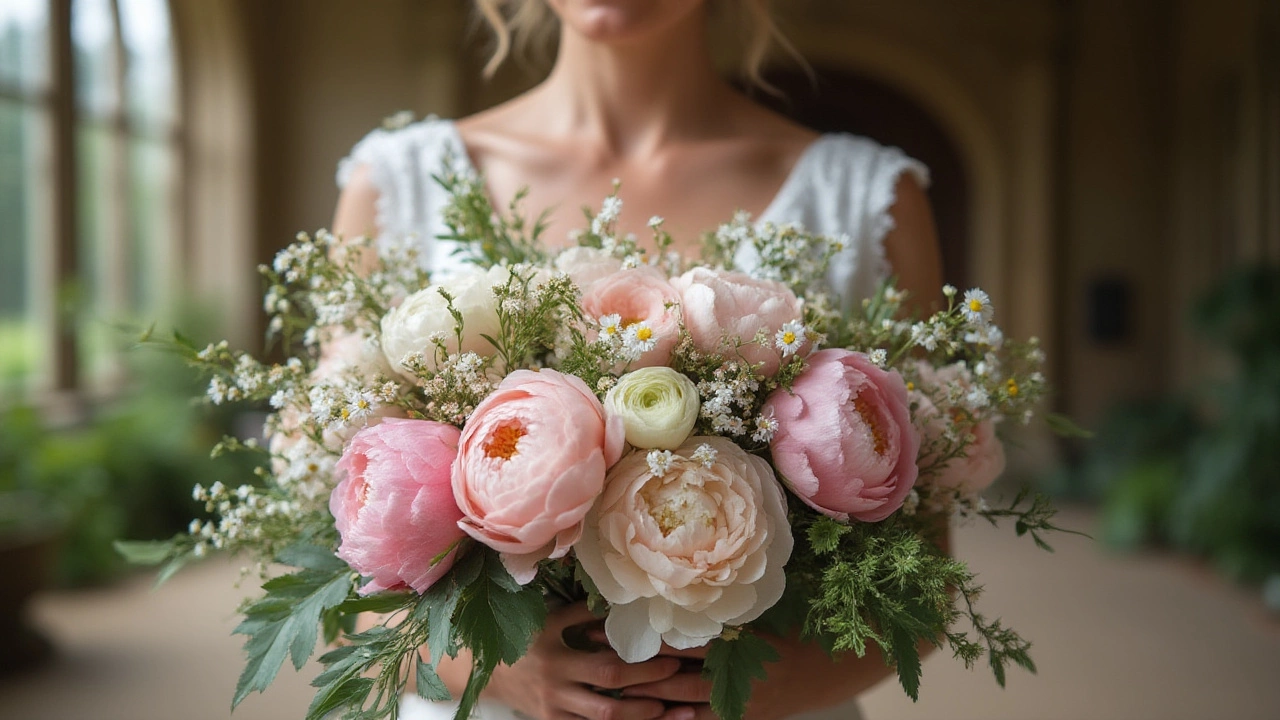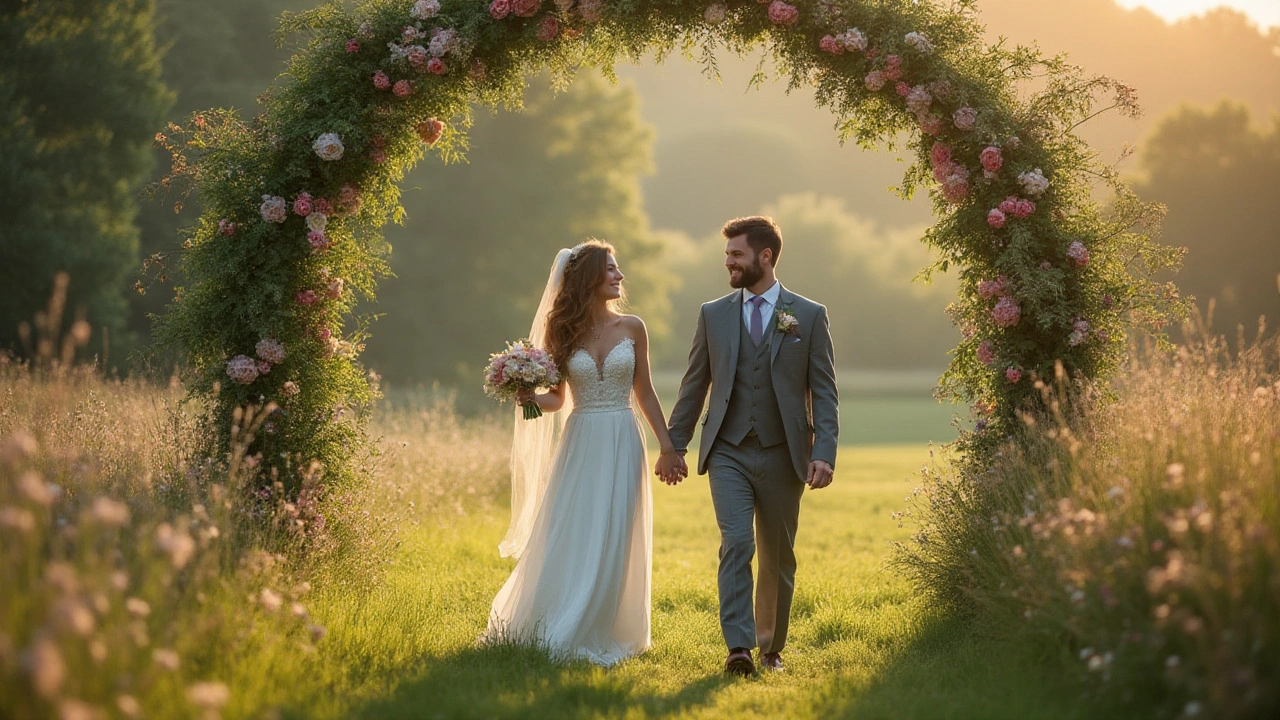Flowers are never just for show at weddings—they’re bursting with centuries of secret messages and silent promises. Imagine a story where every petal, bloom, and leafy sprig whispers a hope or blessing for the couple’s new journey. From ancient Greek pageantry to modern TikTok-worthy centerpieces, flowers do way more than just look pretty along the aisle. They’re a language, and once you crack the code, it’s almost impossible to see a bridal bouquet the same way again.
From Ancient Myths to Modern Aisles: The History Behind Wedding Flowers
Long before Pinterest boards and wedding planners, people filled their wedding celebrations with flowers because they believed those petals held power. In Ancient Greece, olive branches and floral crowns were more than decorations—they signaled peace, fertility, and the hope for strong families. Egyptians favored fragrant blooms to fend off evil spirits. Fast forward to Victorian England, and couples took it a step further: every single flower in the bouquet had a secret meaning. Brides clutched carefully chosen arrangements, each bloom selected to send a hidden message to both their groom and friends.
This "language of flowers"—known as floriography—hit its cultural peak in the 19th century. Back then, an innocent-looking bouquet could contain entire paragraphs of coded messages. Want to say ‘true love and happiness?’ Add lilies of the valley. Seeking luck or protection? Toss in a sprig of rosemary or myrtle. Even flower colors mattered: white for purity, red for passion, yellow sometimes for jealousy. A clever bride could weave an entire love letter among the petals, and only a few would catch all the references.
It sounds old-fashioned, but it still lingers. Couples might not know every single symbolic meaning today, but traditions like tucking a sprig of myrtle into the bouquet (Queen Victoria did it, and every British royal bride since has followed suit) or carrying roses for everlasting love are deeply rooted in these old beliefs. Cultural twists keep things interesting, whether it’s marigolds in Indian weddings for auspiciousness or cherry blossoms in Japanese ceremonies for new beginnings.
The Meanings Behind Popular Wedding Flowers
Think you’re just picking flowers because they look gorgeous? Chances are you’re also sending out some strong symbolic vibes—wittingly or not. Roses still lead the pack, especially the red ones, whispering love with every petal. But there’s a whole playground of meanings behind the most common wedding blooms.
Tulips spell out deep love and cheerful beginnings, perfect for couples bursting with optimism. Peonies? Those are basically a wish for prosperity and a happy marriage (they can also scream ‘wealth’ and ‘bashful beauty’). Calla lilies, sleek and dramatic, bring elegance to the table but also mean faithfulness and rebirth—a quiet promise of commitment. Gardenias, with their creamy petals and intoxicating fragrance, represent purity and joy. Then there’s the sweet, tiny baby’s breath. People often use it for filler, but its actual meaning is everlasting love and innocence, which makes sense in the middle of all that wedding chaos.
If you peek into bouquets around the world, the bouquet ingredients shift, but the messages are similar. In Nigeria, hibiscus means delicate beauty. White orchids are big in Thailand for fertility. Australian natives like eucalyptus get mixed in to symbolize protection and resilience—something I’m partial to after seeing some stormy wedding days over the years. Even the humble daisy isn’t just cute; it stands for loyal love and true innocence.
wedding flowers have a real knack for multitasking. They decorate, scent the air, and say things hearts can barely put into words. Here’s a quick breakdown of some classic favourites and what they mean:
| Flower | Symbolic Meaning |
|---|---|
| Rose (red) | Romantic love, passion |
| Lily-of-the-valley | Happiness, humility |
| Myrtle | Devotion, fertility |
| Peony | Good fortune, happy marriage |
| Hydrangea | Gratitude, understanding |
| Baby's breath | Innocence, everlasting love |
| Orchid | Luxury, strength, beauty |
| Sunflower | Adoration, loyalty |
| Daisy | Loyal love |

Why Couples Still Rely on Symbolism in Wedding Flowers
You might think that in an age of themed weddings and viral trends, the symbolic stuff would fade, but for so many couples, it’s the secret sauce behind their choices. Some want to honor heritage—like including orange blossoms in Mediterranean ceremonies for purity and fertility. Others lean into meaning because it gives them a way to tell a story or pay tribute to loved ones. My best friend tucked forget-me-nots into her bouquet for her late grandmother, not because they matched the color scheme, but because they meant remembrance and everlasting connection.
Sometimes, the symbolism is personal rather than traditional. A lot of people choose flowers that played a role in their relationship—maybe daffodils because they were blooming on the couple’s first date, or wildflowers because of a memorable picnic. When Lachlan and I got married, we picked sprigs of lavender for calm and devotion (and honestly because my nerves needed all the help they could get that day). Five years later, the scent still takes us right back to that moment.
If you’re not sentimental, that’s fine; some folks just go all in for the visuals. But if you ask around, you’ll find even the most practical couples often end up weaving at least a little bit of family or cultural symbolism into their floral choices. According to a 2024 survey by The Knot, 67% of couples said their bouquet included at least one flower chosen for its symbolic meaning, not just its look. Even the choice of greenery counts—ivy for fidelity, fern for sincerity, olive for peace. The symbolism is an extra layer, almost like adding a secret wink or a good luck charm to your celebration.
Tips for Choosing Symbolic Flowers for Your Wedding
Picking wedding flowers isn’t just about what’s in season or what matches the bridesmaids' dresses—unless that’s all you care about, which is totally fine. If you want your blooms to tell a deeper story, it’s worth thinking about these tips.
- Start with what matters to you: Is there a flower that reminds you of a beloved family member, your home country, or the early days of your love story?
- Mix traditional with personal: Don’t feel boxed in by charts or old etiquette books. If hydrangeas are meaningful to your grandma but technically symbolize ‘thank you for understanding,’ go for it—those associations belong to you now.
- Get creative with greens: Sometimes the meaning comes from the leaves. Laurel for victory, sage for wisdom, eucalyptus for protection.
- Don’t stress over “bad luck” blooms: While some believe yellow roses mean jealousy or carnations are a funeral flower, cultural perspectives shift fast. If you adore a certain flower, own it.
- Consult your florist: Good florists are part botanist, part matchmaker. Ask them about meaning and see if they have ideas to layer in extra symbolism.
- Remember seasonal options: Local, in-season flowers not only cost less and last longer, but many carry rich local meanings—like British bluebells for everlasting love or native banksia in Australia for new beginnings.
- Think about scents: It’s not just how your flowers look—fragrance can trigger memories and emotions for years after the wedding.
- Celebrate your roots: Look up traditional wedding flowers or customs from your family’s background. Whether it’s jasmine for love in South Asia or lotuses for spiritual growth in East Asian traditions, these little nods can mean so much.
Symbolic flowers also make sweet wedding favors—tiny posies of rosemary for luck, mini potted succulents (for resilience and enduring love), or lavender sachets to wish your guests peace and devotion. For eco-minded couples, dried flowers or locally foraged blooms can carry just as much meaning—they stay beautiful longer, too.
And if you’re worried about following the "right" symbolism, don’t. The beauty of modern weddings is that you can invent the rules. If you want sunflowers in winter, calla lilies at a beach, or roses just because, do it. Sometimes, a pop of color or a favorite flower says more about your joy than any ancient code could.
